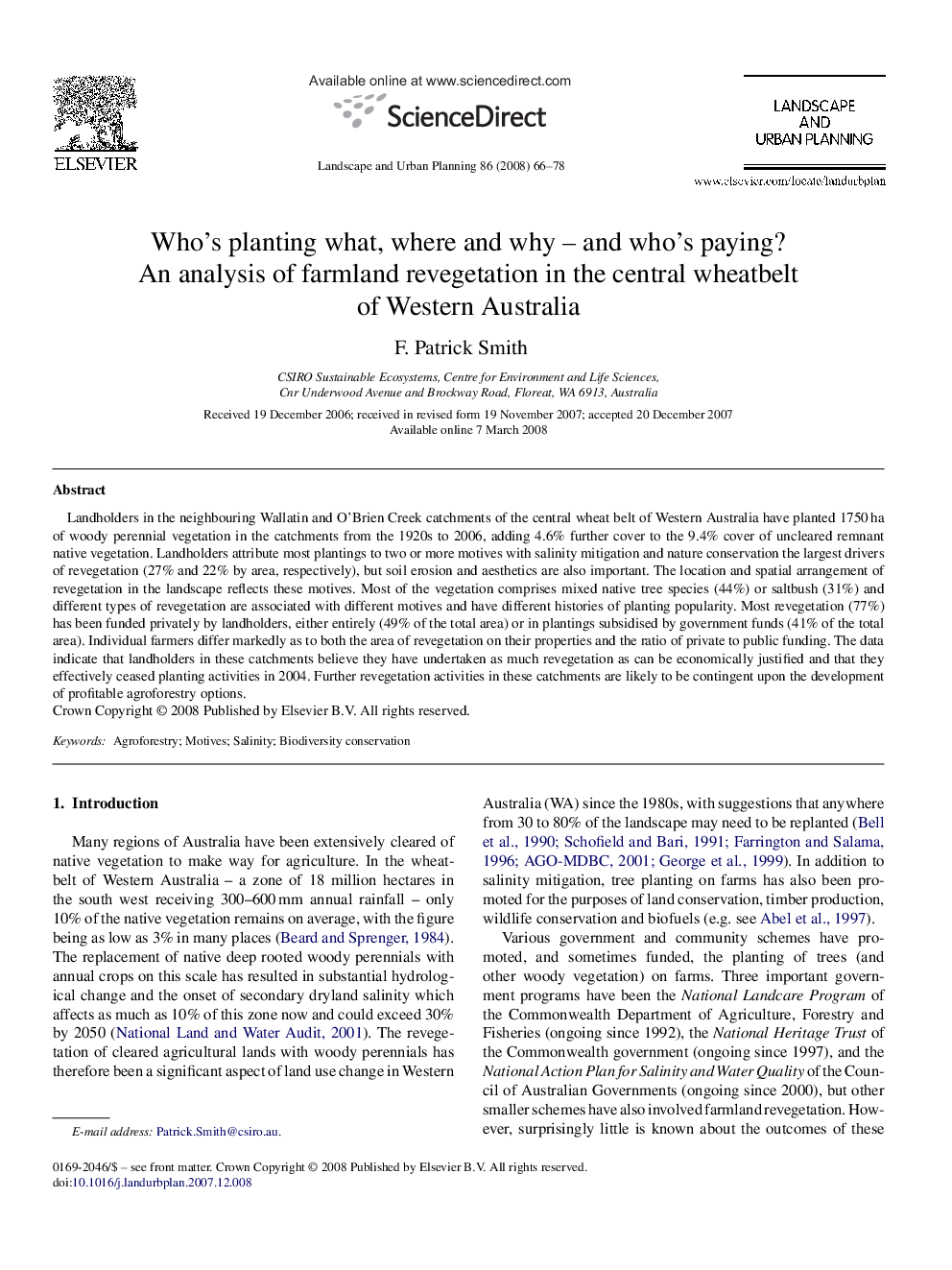| Article ID | Journal | Published Year | Pages | File Type |
|---|---|---|---|---|
| 1050169 | Landscape and Urban Planning | 2008 | 13 Pages |
Landholders in the neighbouring Wallatin and O’Brien Creek catchments of the central wheat belt of Western Australia have planted 1750 ha of woody perennial vegetation in the catchments from the 1920s to 2006, adding 4.6% further cover to the 9.4% cover of uncleared remnant native vegetation. Landholders attribute most plantings to two or more motives with salinity mitigation and nature conservation the largest drivers of revegetation (27% and 22% by area, respectively), but soil erosion and aesthetics are also important. The location and spatial arrangement of revegetation in the landscape reflects these motives. Most of the vegetation comprises mixed native tree species (44%) or saltbush (31%) and different types of revegetation are associated with different motives and have different histories of planting popularity. Most revegetation (77%) has been funded privately by landholders, either entirely (49% of the total area) or in plantings subsidised by government funds (41% of the total area). Individual farmers differ markedly as to both the area of revegetation on their properties and the ratio of private to public funding. The data indicate that landholders in these catchments believe they have undertaken as much revegetation as can be economically justified and that they effectively ceased planting activities in 2004. Further revegetation activities in these catchments are likely to be contingent upon the development of profitable agroforestry options.
